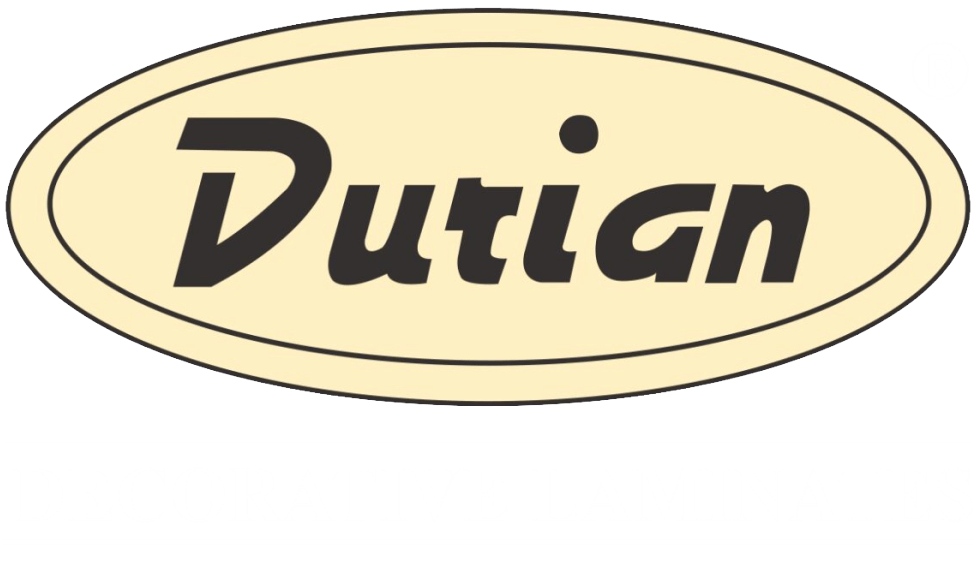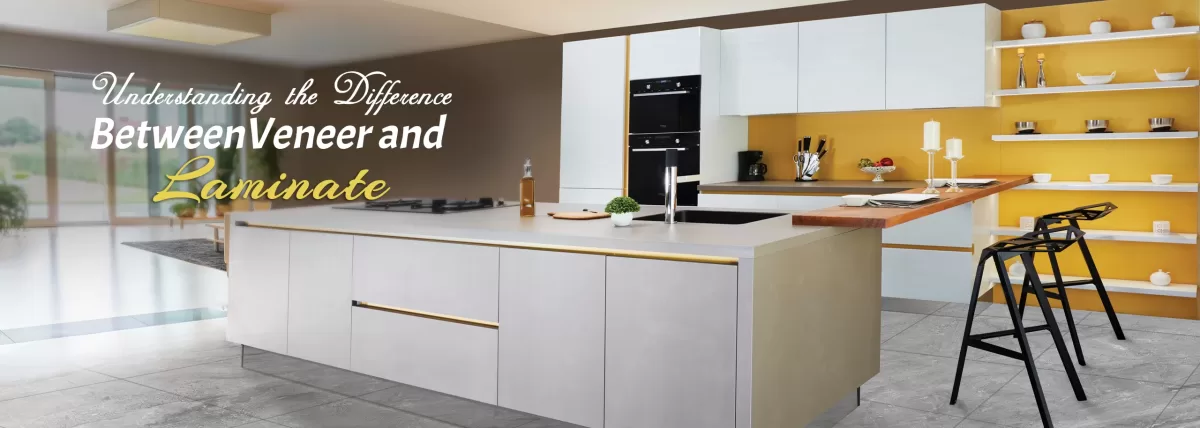When it comes to interior design and furniture, two terms that often come up are “veneer” and “laminate.” While they both serve similar purposes and offer aesthetic appeal, it’s important to understand the differences between them to make an informed decision for your projects. In this comprehensive guide, we will dive deep into the characteristics, uses, and distinctions of veneer and laminate, helping you gain clarity on these two popular materials.
Veneer : Enhancing Natural Beauty
Veneer is a thin layer of real wood that is applied to the surface of furniture, cabinets, or other objects to enhance their appearance. It is typically sourced from high-quality timber, carefully sliced or peeled to achieve a consistent thickness, and then bonded to a substrate. Veneer offers several unique advantages:
1. Natural Appeal and Character
Veneer captures the natural beauty, grain patterns, and unique characteristics of various wood species. It adds warmth, richness, and depth to any piece of furniture or interior space. Each veneer sheet is a showcase of the specific tree it originates from, creating a sense of authenticity and sophistication.
2. Durability and Longevity
High-quality veneer is known for its durability and longevity. It resists warping, cracking, and splitting better than solid wood. By using veneer, you can enjoy the aesthetic appeal of real wood without worrying about the inherent issues that solid wood may face over time.
3. Design Versatility
Veneer offers a wide range of design possibilities. It can be used to create intricate patterns, book-matched or slip-matched arrangements, and decorative inlays. With veneer, you have the flexibility to customize your furniture or interior elements according to your preferences and design vision.
4. Sustainability
Using veneer promotes sustainable practices in the woodworking industry. Since veneer uses a thin layer of wood, it maximizes the yield from each log, minimizing waste compared to solid wood construction. Additionally, veneer allows for the use of rare or exotic wood species in a responsible manner.
Laminate : A Blend of Style and Practicality
Laminate, on the other hand, is a synthetic material made by pressing together multiple layers of resin-infused paper under high heat and pressure. The top layer, known as the decorative layer, features a printed design or pattern that mimics the look of various materials, including wood, stone, or even metal. Laminate offers several distinct advantages :
1. Wide Array of Designs
Laminate is renowned for its extensive range of design options. With advancements in printing technology, manufacturers can replicate the appearance of different materials with remarkable accuracy. Whether you desire the look of luxurious marble, sleek hardwood, or contemporary concrete, laminate provides a cost-effective solution.
2. Durability and Easy Maintenance
Laminate surfaces are highly durable, resistant to scratches, stains, and fading. They are engineered to withstand everyday wear and tear, making them ideal for high-traffic areas such as kitchen countertops or office desks. Additionally, laminate is easy to clean with just a damp cloth and mild soap, requiring minimal maintenance.
3. Affordability
Compared to veneer or solid wood, laminate is a more budget-friendly option. It offers a cost-effective way to achieve the desired aesthetic without compromising on quality or durability. Whether you’re working on a residential or commercial project, laminate provides an attractive solution that suits various budgets.
4. Consistency and Uniformity
Laminate offers consistent color, pattern, and texture throughout the entire surface. Unlike natural materials that can exhibit variations, laminate ensures a uniform appearance, making it easier to match pieces or create a cohesive design scheme.
Key Distinctions : Veneer vs. Laminate
While both veneer and laminate serve as decorative surface finishes, they differ in terms of material composition, appearance, and characteristics. Here are some key distinctions between the two:
1. Material Composition
Veneer is made from real wood and showcases the unique features of specific wood species. Laminate, on the other hand, is composed of synthetic materials, with the top layer featuring a printed design.
2. Surface Texture
Veneer retains the natural texture of wood, providing a tactile experience. Laminate, although it can mimic textures to a certain extent, offers a smoother and more uniform surface.
3. Reparability
Veneer can be repaired by sanding and refinishing the surface if it becomes damaged or worn over time. Laminate, however, is non-repairable, and any damage to the surface typically requires replacing the entire panel.
4. Cost
Veneer is generally more expensive than laminate due to the use of real wood. Laminate, being a synthetic material, is a cost-effective alternative that still delivers aesthetic appeal.
Choosing Between Veneer and Laminate : Considerations
When deciding between veneer and laminate, there are several factors to consider, including :
1. Budget
Evaluate your budget and determine the cost range that aligns with your project requirements. This will help you narrow down your options and make an informed decision.
2. Desired Aesthetic
Consider the visual effect you want to achieve. If you appreciate the natural beauty of wood and the authenticity it brings, veneer might be the better choice. If you’re looking for a wide range of design options and cost-effectiveness, laminate could be the ideal solution.
3. Application and Durability
Think about the specific application and the level of durability required. For high-traffic areas or surfaces prone to moisture and heavy use, laminate’s durability and ease of maintenance make it a practical choice. However, if you’re seeking a premium look and long-term durability, veneer may be more suitable.
4. Environmental Considerations
If sustainability and responsible sourcing are important to you, veneer offers an eco-friendly option that utilizes the full potential of each log and promotes responsible forestry practices.
Conclusion
In summary, understanding the differences between veneer and laminate is crucial when it comes to selecting the right material for your interior design and furniture projects. Veneer brings the natural beauty and warmth of real wood, offering a timeless appeal and character. Laminate, on the other hand, provides an extensive range of design options, durability, and affordability.


No Comments